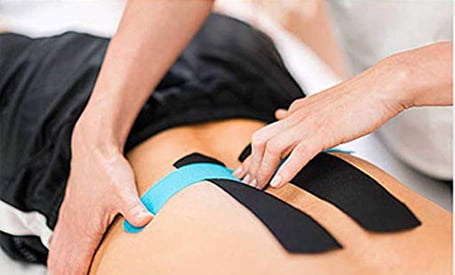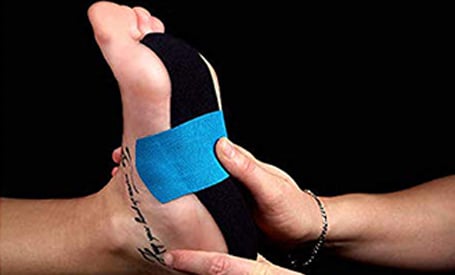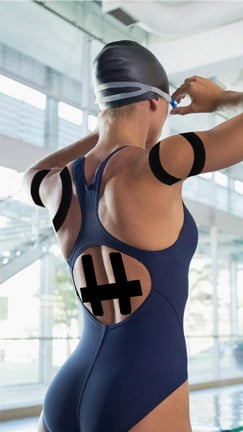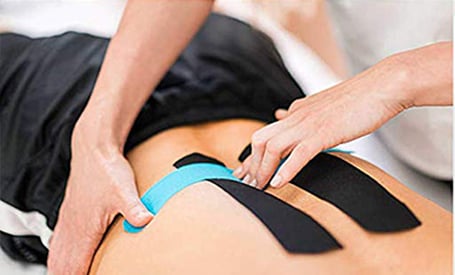Copyright © 2021 Kunshan Yuhuan Package Materials Co., Ltd. All rights reserved.
- 86 0512-50336235
- lulu@suzmc.com
- Sitemap
Discover the incredible benefits of kinesiology tape for athletes and individuals seeking pain relief. Explore its role in injury prevention, rehabilitation, and performance enhancement. Learn how to properly apply and maximize the potential of kinesiology tape. Unleash the power of kinesiology tape today!
Kinesiology tape has emerged as a revolutionary tool in the world of sports and rehabilitation. Athletes and individuals alike are harnessing its potential to improve performance, prevent injuries, and expedite the healing process.
In this comprehensive guide, we delve into the wonders of kinesiology tape, exploring its benefits, applications, and best practices. Whether you're an athlete looking to gain an edge or someone seeking relief from pain, this article will equip you with the knowledge to unleash the full potential of kinesiology tape.

Kinesiology tape, also known as elastic therapeutic tape, is a stretchy, adhesive tape that offers a wide range of benefits for athletes and individuals seeking pain relief. Its unique composition mimics the properties of human skin, providing support without restricting movement.
Whether you're an athlete, a fitness enthusiast, or someone recovering from an injury, kinesiology tape can be a game-changer in optimizing performance and promoting healing.

Kinesiology tape functions on the principles of elasticity, tension, and proprioception. It aims to provide support to muscles and joints while allowing a full range of motion. By applying gentle tension to the skin, kinesiology tape lifts the superficial tissues, creating space for improved circulation and lymphatic drainage.
One of the remarkable qualities of kinesiology tape is its elasticity. When stretched, it can recoil to its original shape, exerting a gentle pulling force on the skin. This elasticity plays a vital role in maintaining optimal biomechanics and promoting healing.
Kinesiology tape stimulates proprioception, the body's ability to sense its position and movement. By applying the tape to specific muscle groups, it encourages better muscle activation, leading to improved performance and reduced risk of injury.
The lifting effect of kinesiology tape allows for increased blood flow and lymphatic drainage. This enhanced circulation helps flush out metabolic waste, reduce swelling, and accelerate the healing process.

Kinesiology tape offers a myriad of applications, making it an essential tool for athletes, individuals recovering from injuries, and those seeking pain relief.
By providing support to muscles and joints, kinesiology tape can help prevent injuries and promote faster recovery. It aids in stabilizing vulnerable areas, reducing excessive movement, and relieving stress on injured tissues.
Kinesiology tape has been proven effective in reducing pain and discomfort caused by various conditions, such as muscle strains, joint sprains, and overuse injuries. It can alleviate tension, improve circulation, and provide support to affected areas.
Improper posture can lead to muscular imbalances and chronic pain. Kinesiology tape can assist in correcting posture by providing tactile cues and support, helping individuals maintain proper alignment and reduce strain on muscles.
Athletes seeking a competitive edge can benefit greatly from kinesiology tape. By supporting muscles and joints, improving circulation, and enhancing proprioception, it can boost performance, agility, and overall efficiency.
Proper application of kinesiology tape is crucial to maximize its benefits. Here are some key techniques to keep in mind:
Before applying kinesiology tape, ensure that the skin is clean, dry, and free from oils or lotions. Shave excessive hair if necessary, as it may interfere with tape adhesion.
The basic taping technique involves applying the tape with a specific amount of tension to provide support and facilitate movement. It is essential to follow the natural muscle and joint lines to ensure optimal effectiveness.
Different conditions require specific taping techniques. For instance, to address a knee injury, a patellar support taping technique may be employed. Understanding the anatomy and biomechanics of the affected area is crucial for targeted taping.
To enhance tape longevity, avoid excessive stretching during application, and round the corners of the tape. Applying gentle heat using a hairdryer can also improve adhesive properties.

For athletes, kinesiology tape has become an indispensable tool in their training and performance routines. Here are some key ways athletes can benefit from using kinesiology tape:
Athletes engage in rigorous activities that put significant stress on their joints. Kinesiology tape can provide added stability to joints, reducing the risk of sprains, strains, and other common sports-related injuries.
By properly applying kinesiology tape to vulnerable areas, athletes can minimize the likelihood of injuries such as runner's knee, Achilles tendonitis, and shin splints. The tape's support and proprioceptive feedback can significantly reduce the risk of overuse injuries.
In the unfortunate event of an injury, kinesiology tape can speed up the healing process. By improving blood flow, reducing swelling, and supporting injured tissues, it aids in the recovery of sprains, strains, and muscle tears.
Athletes strive to optimize their performance on the field or court. Kinesiology tape can contribute to this goal by improving muscle activation, increasing range of motion, and reducing fatigue. It allows athletes to move more efficiently and achieve their peak performance.

Here are answers to some commonly asked questions about kinesiology tape:
Kinesiology tape is designed to be worn for several days, depending on the brand and individual factors such as skin sensitivity and activity level. However, it is recommended to change the tape every three to five days to maintain its effectiveness.
Yes, most kinesiology tapes are water-resistant and can withstand exposure to water, including showers and swimming. However, excessive exposure to water may compromise its adhesive properties. Pat dry the tape after getting it wet to prolong adhesion.
Yes, many kinesiology tapes are hypoallergenic and suitable for sensitive skin. However, it is advisable to test a small patch of tape on the skin before applying it extensively to ensure there are no adverse reactions.
Yes, kinesiology tape can be used during pregnancy to provide support to the muscles and joints experiencing strain. However, it is essential to consult with a healthcare professional or physical therapist for specific taping techniques and guidelines.
Kinesiology tape is typically designed for single-use applications. Once removed, the adhesive properties diminish, and reapplying the tape may compromise its effectiveness. It is best to use a fresh piece of tape for each application.
While many individuals can apply kinesiology tape themselves with proper knowledge and guidance, seeking assistance from a trained professional such as a physical therapist or athletic trainer can ensure optimal application and results, especially for complex conditions.
Kinesiology tape has revolutionized the way we approach athletic performance, injury prevention, and rehabilitation. Its versatility, unique properties, and countless applications make it an invaluable tool for athletes, individuals recovering from injuries, and those seeking pain relief. By understanding the principles behind kinesiology tape and mastering its application techniques, you can unlock its full potential and experience the remarkable benefits it offers. Embrace the power of kinesiology tape and take your performance and healing to new heights.
Kunshan Yuhuan has 18 years of expertise in manufacturing and developing multifunctional tapes, including a wide range of kinesiology tapes: kinesiology tapes, athletic tapes, clear bandages, elastic bandages, zinc oxide tapes, and has a leading position in China.
If you want to start a business about kinesiology tapes, contact our R&D engineers now to get the latest industry information.